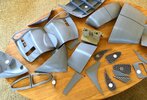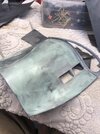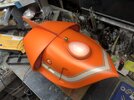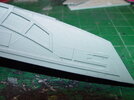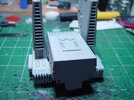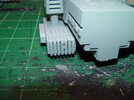I've never done anything with 3D prints, though I have followed some conversations. I've seen two recommendations for filling/sanding. One says to sand it as smooth as possible, then use filler, and sand smooth. The other said the finished 3D model surface is the surface, so you should slather putty on it and then sand it smooth. What's the correct way to go about it?
I just printed out a 1/48 Moldy Crow on my nephew's Bambu A1 to see how well (or bad) it would print a model. I was shocked how well it came out. The model is about 90% there, just needs some fixes (engine position, wing position), panel lines scribed, and details added/corrected. I might actually have a finished model this year!
I just printed out a 1/48 Moldy Crow on my nephew's Bambu A1 to see how well (or bad) it would print a model. I was shocked how well it came out. The model is about 90% there, just needs some fixes (engine position, wing position), panel lines scribed, and details added/corrected. I might actually have a finished model this year!

